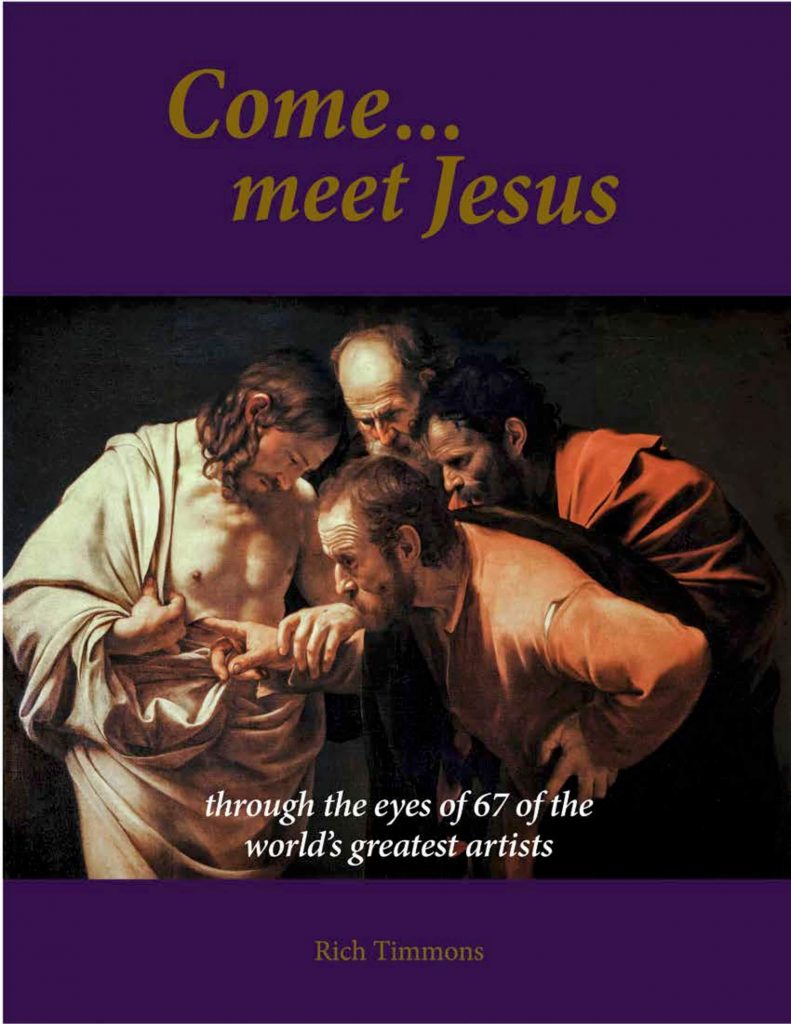When they came to the place that is called “The Skull”, they crucified him there with the criminals, one on the right and the other on the left. Jesus said, “Father, forgive them, for they don’t know what they are doing.” Dividing his garments among them, they cast lots. The people stood watching. The rulers with them also scoffed at him, saying, “He saved others. Let him save himself, if this is the Christ of God, his chosen one!” The soldiers also mocked him, coming to him and offering him vinegar, and saying, “If you are the King of the Jews, save yourself!” An inscription was also written over him in letters of Greek, Latin, and Hebrew: “THIS IS THE KING OF THE JEWS.”
Luke 23:33-38
There have been so many depictions of Christ on the cross throughout art history, but none quite like this. This flips the usual perspective and puts the viewer in the position of Christ on the cross; we are seeing what he saw. His bloody feet are visible on the bottom of the image, and we see a collection of individuals below and their reaction to this event. Mourning followers and loved ones, staid but a little frightened, Roman soldiers, the Jewish leaders who put Him there, some gleeful and mocking, some serious and stern, some looking to the skies as if they are seeing it grow dark and wondering if He really was the son of God. And in the back, neutral and curious onlookers.
The whole image is rather overwhelming but pales in comparison to how overwhelming it must have been for Christ. Overwhelmed with physical pain and torment, overwhelmed with the ache of separation from His Father, but also overwhelmed with love… not just a general love for mankind, but a deep personal love for each face looking up at Him then and all who would throughout human history. Only God Himself could bear all of that pain and all of that love. He did it for me. He did it for you.
James Tissot was a successful artist in his lifetime, and in 1885 experienced a revival of faith. For the rest of his life, he painted scenes from the Bible. This painting was part of his Life of Christ series of 350 watercolors. To prepare for the series, he traveled to the middle east to study details of daily life to make his paintings feel immediate and believable. This dedication to detail and the intensity of his faith are evident in this and other works in the series.


